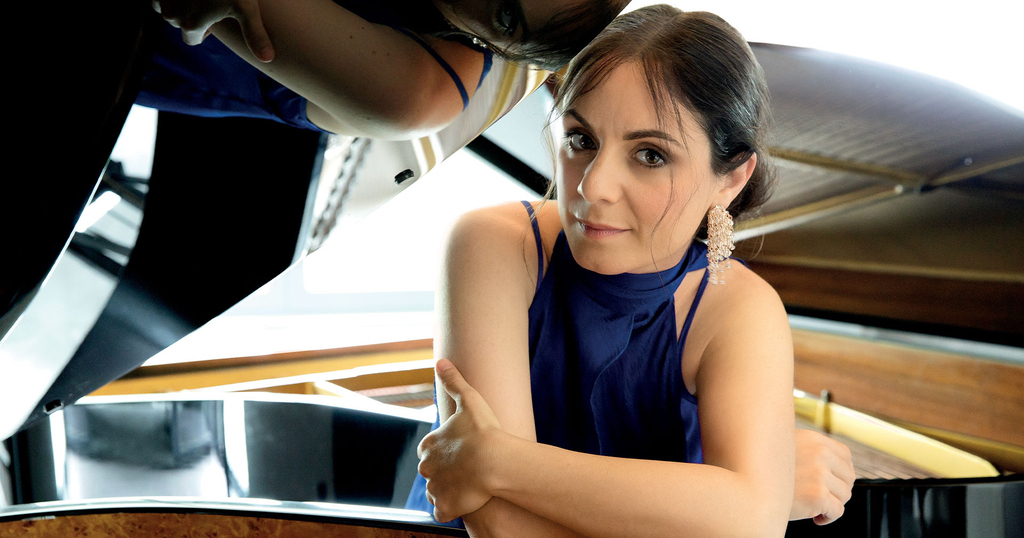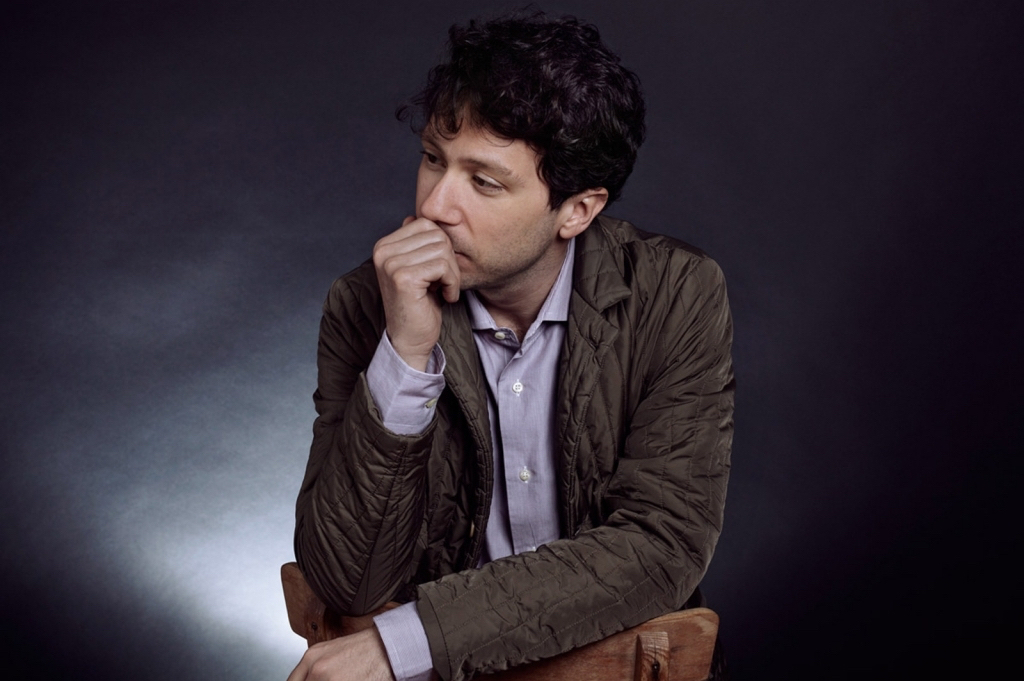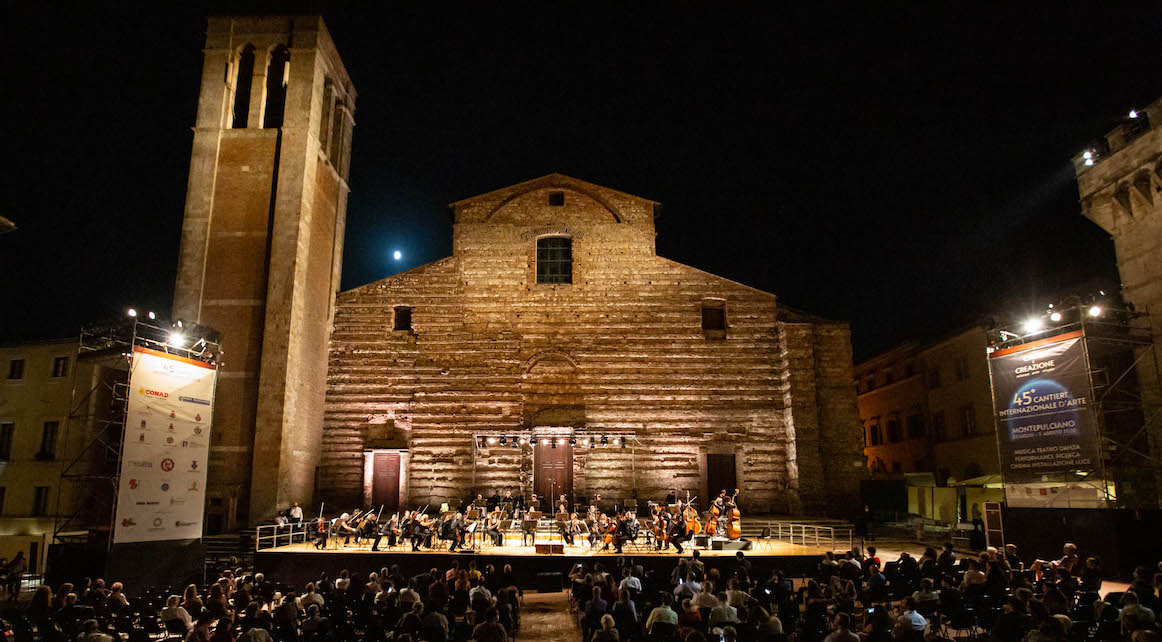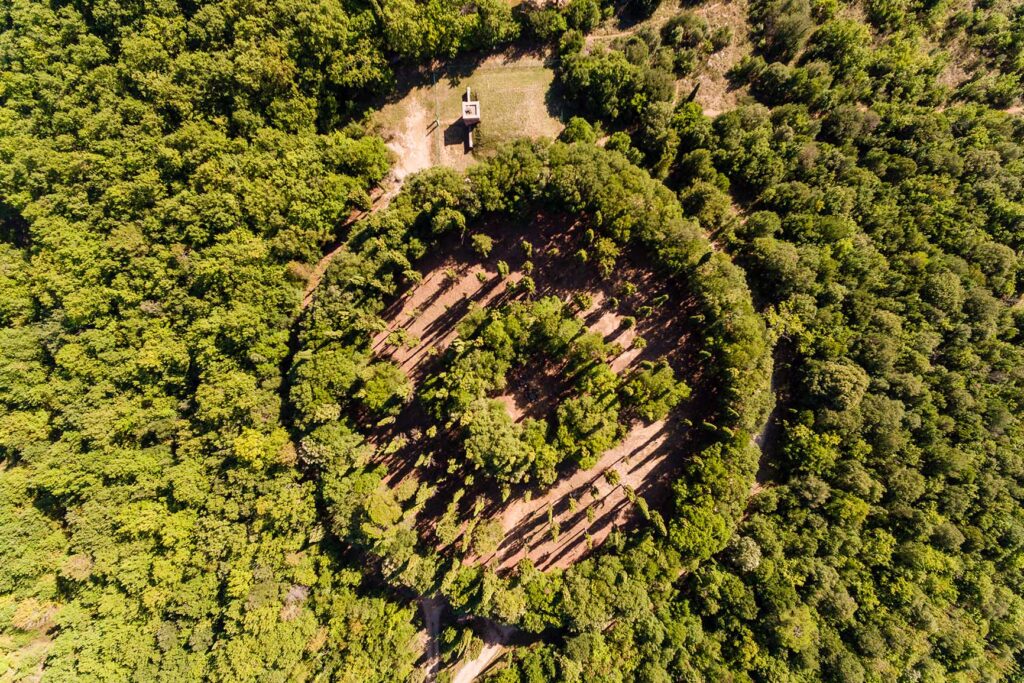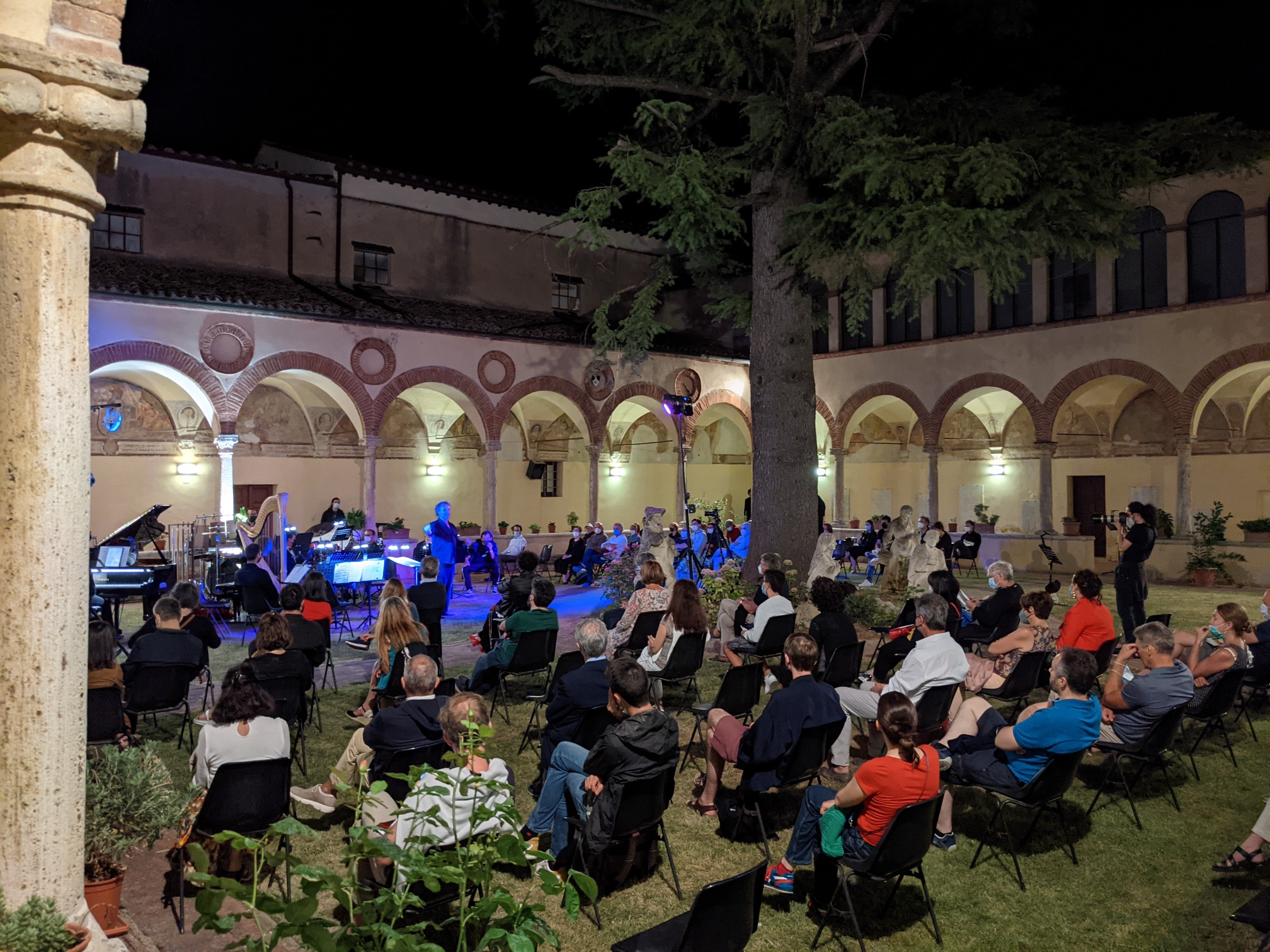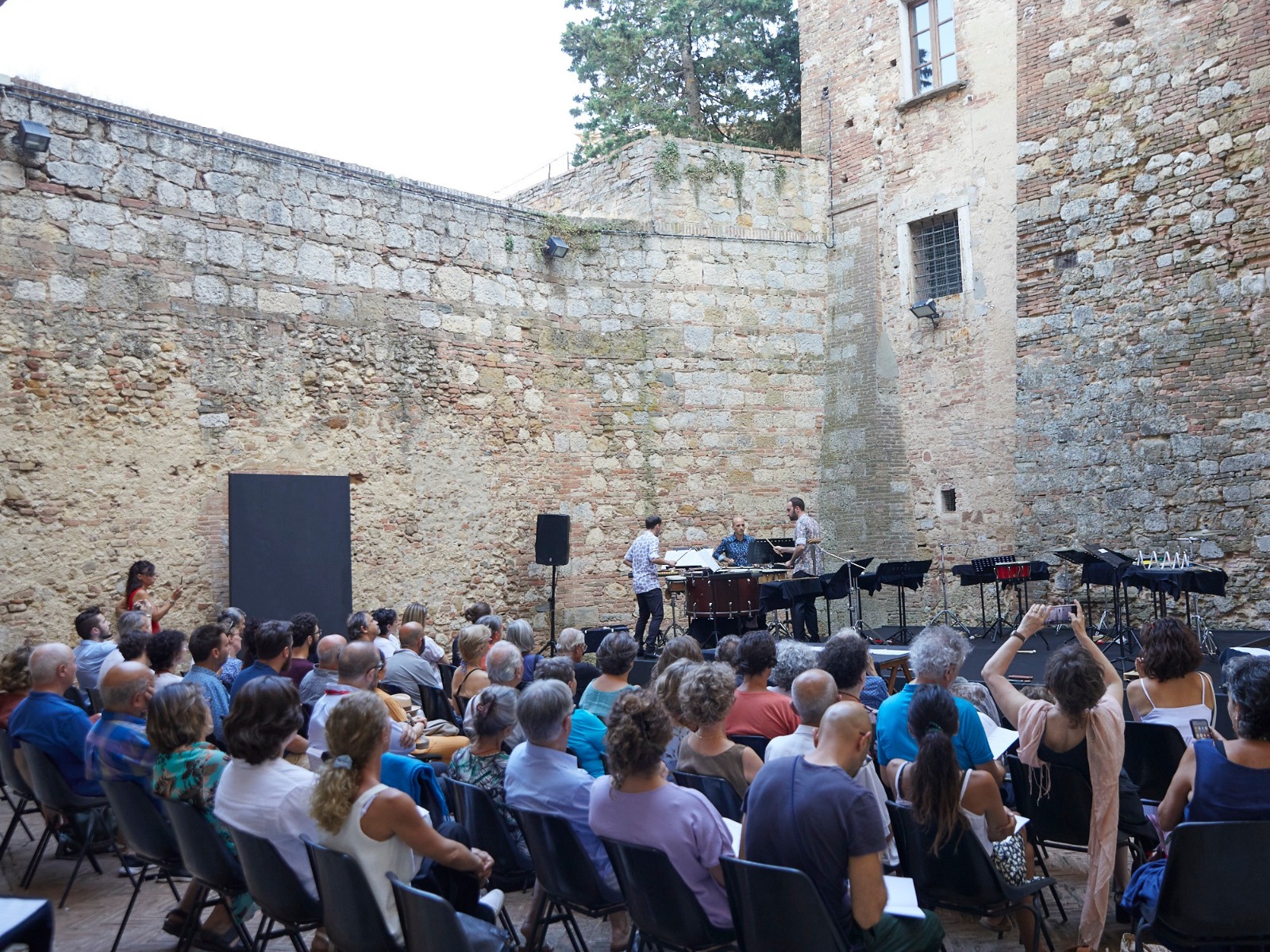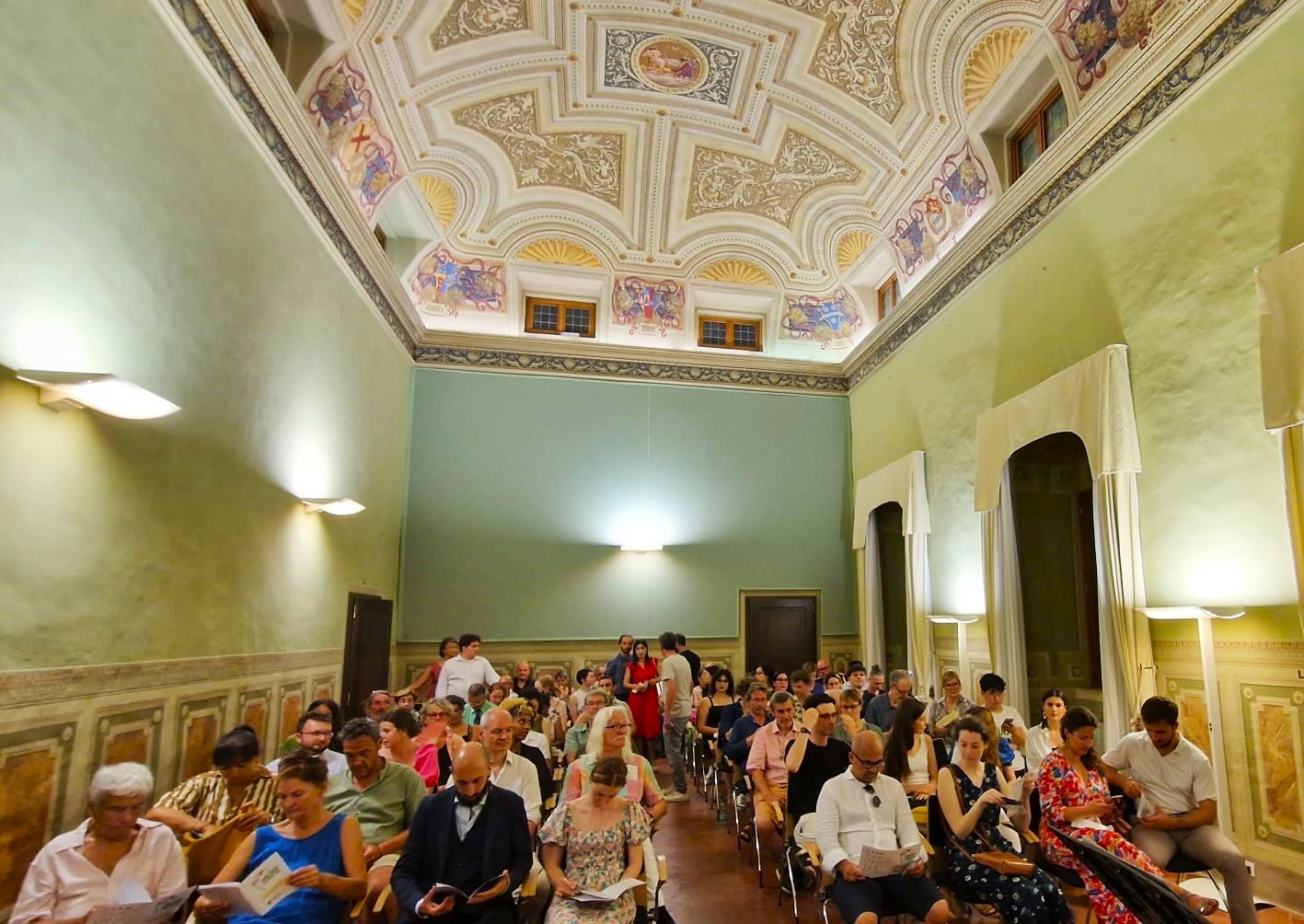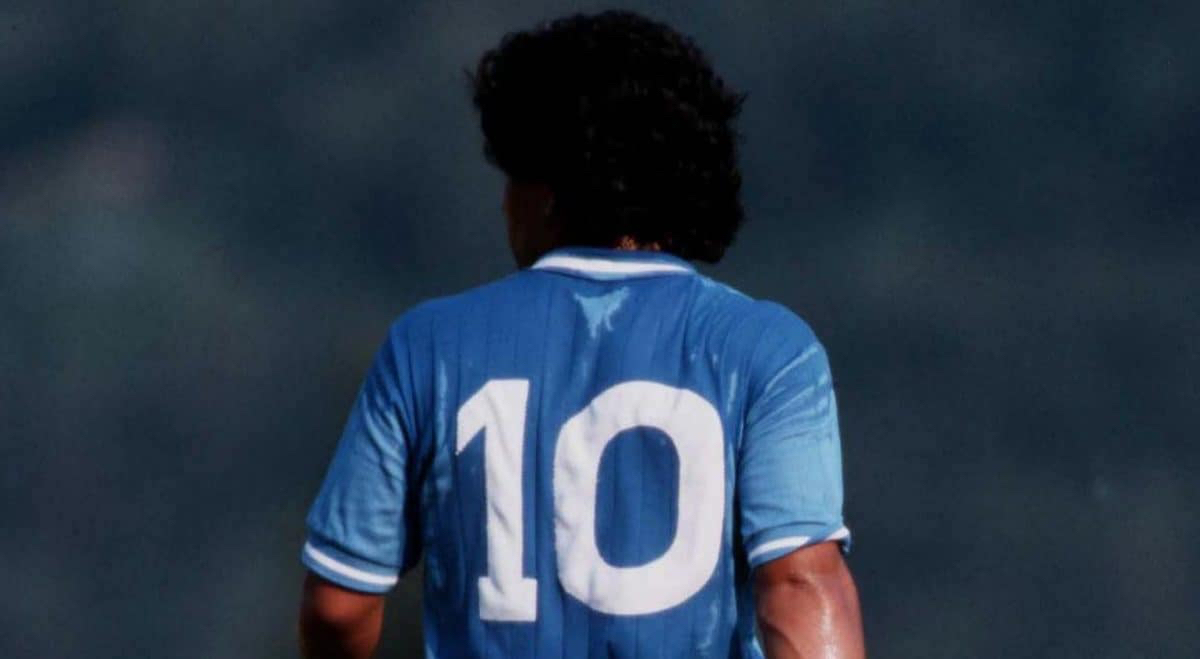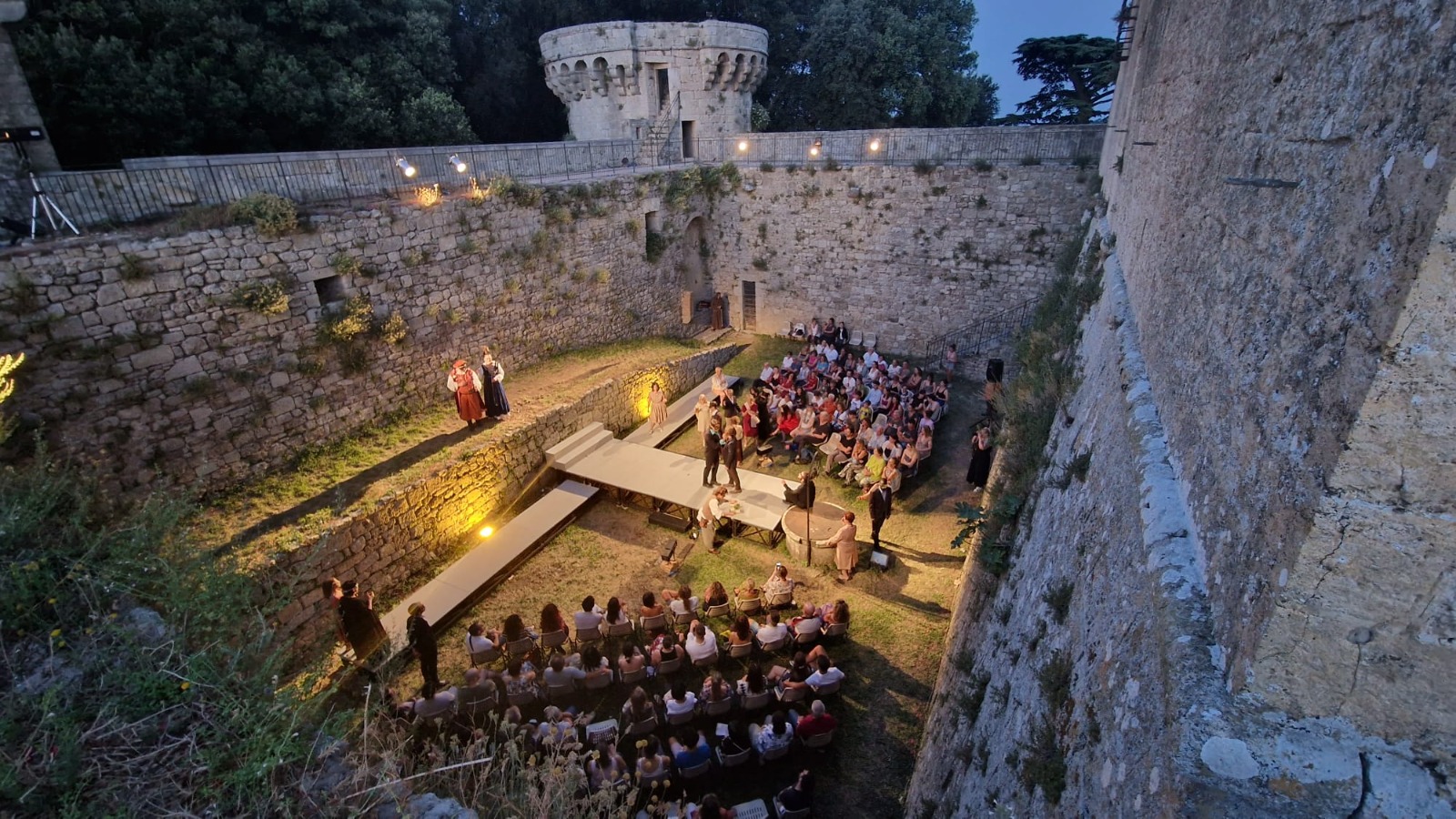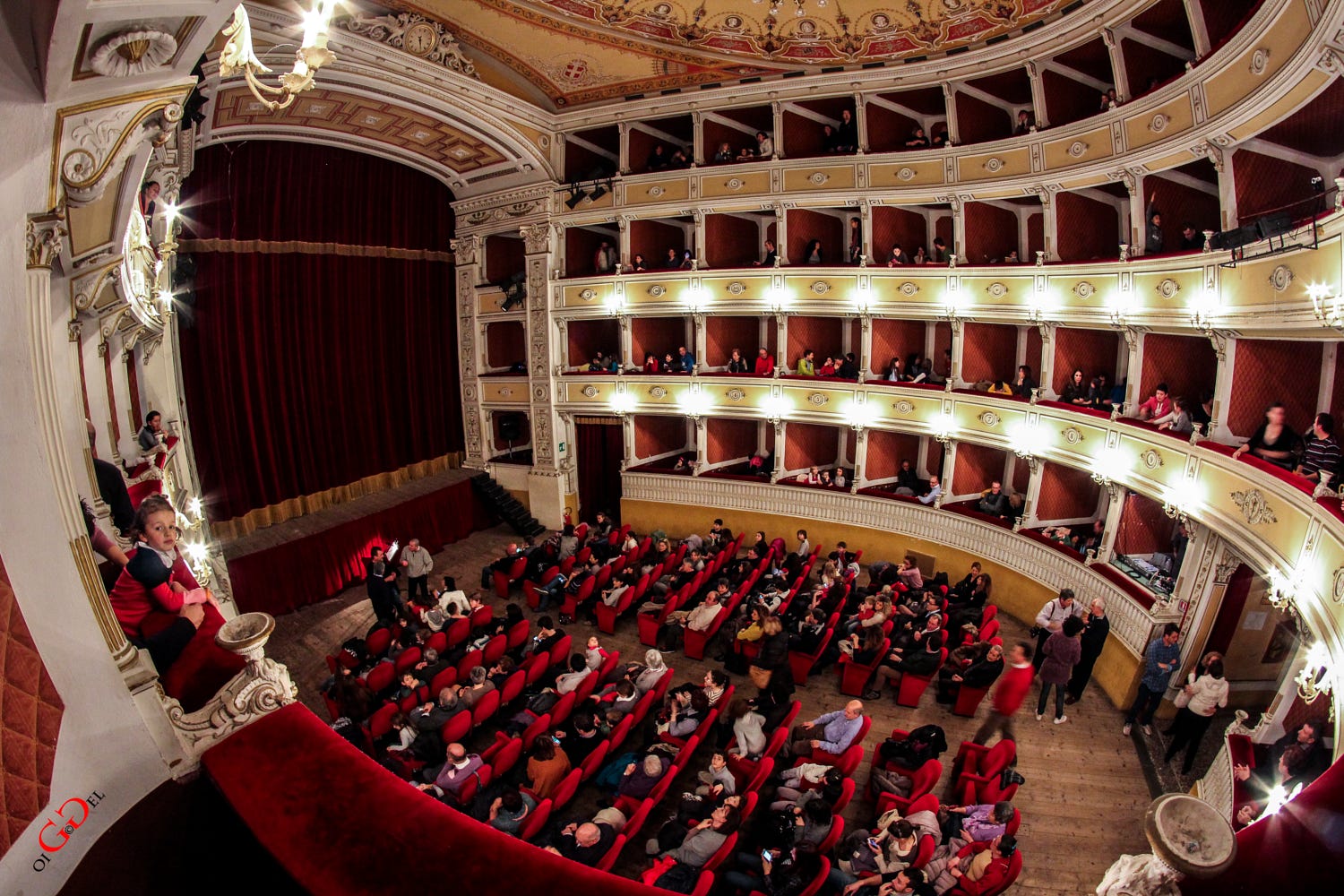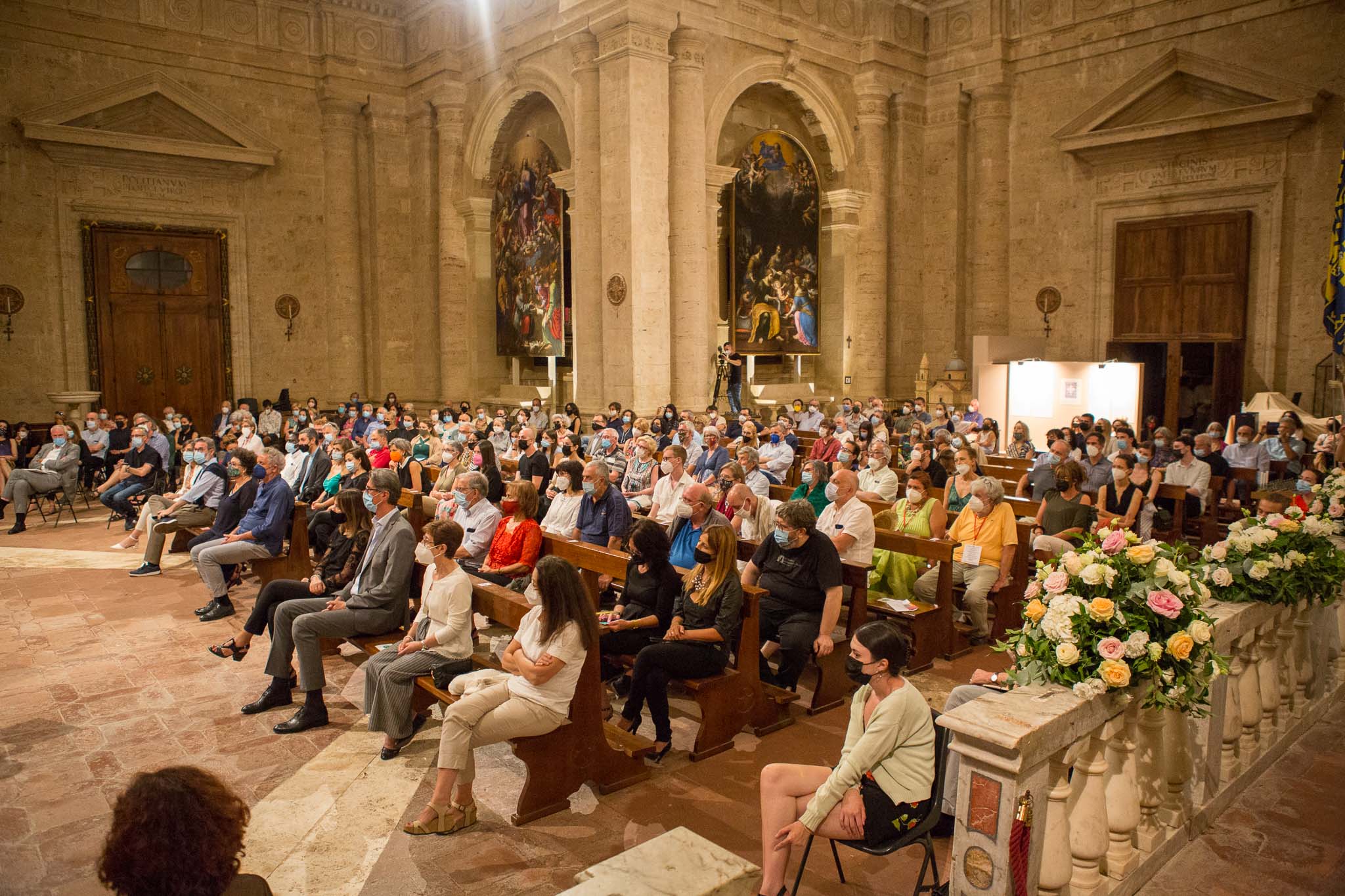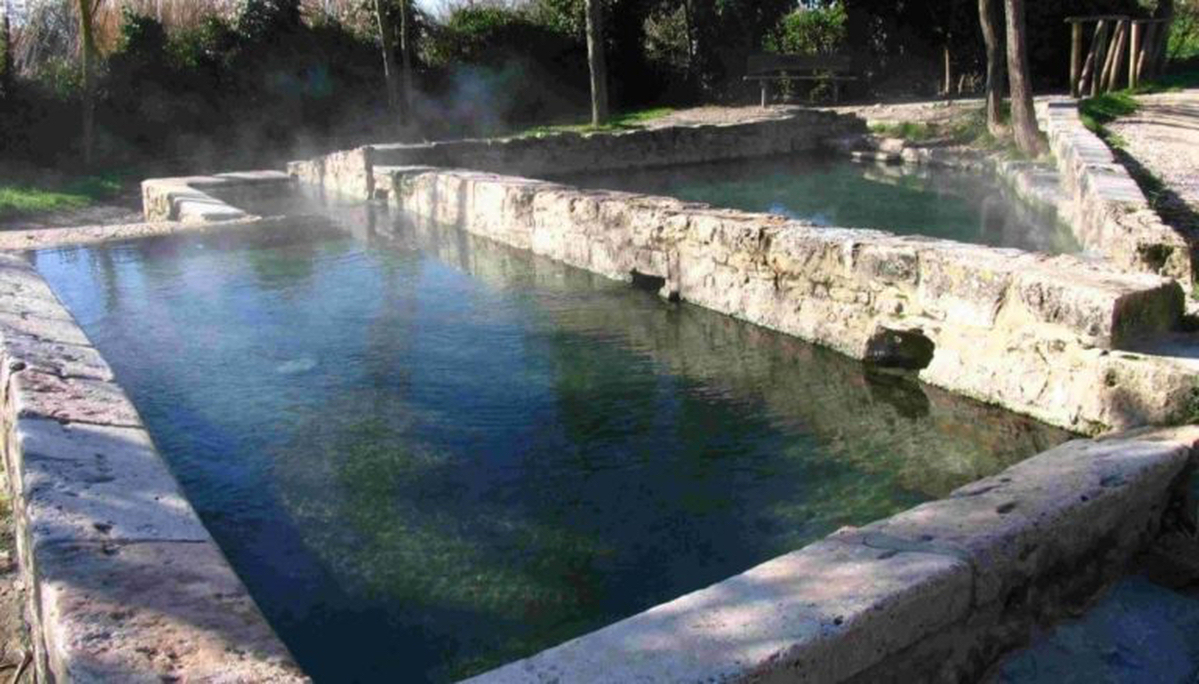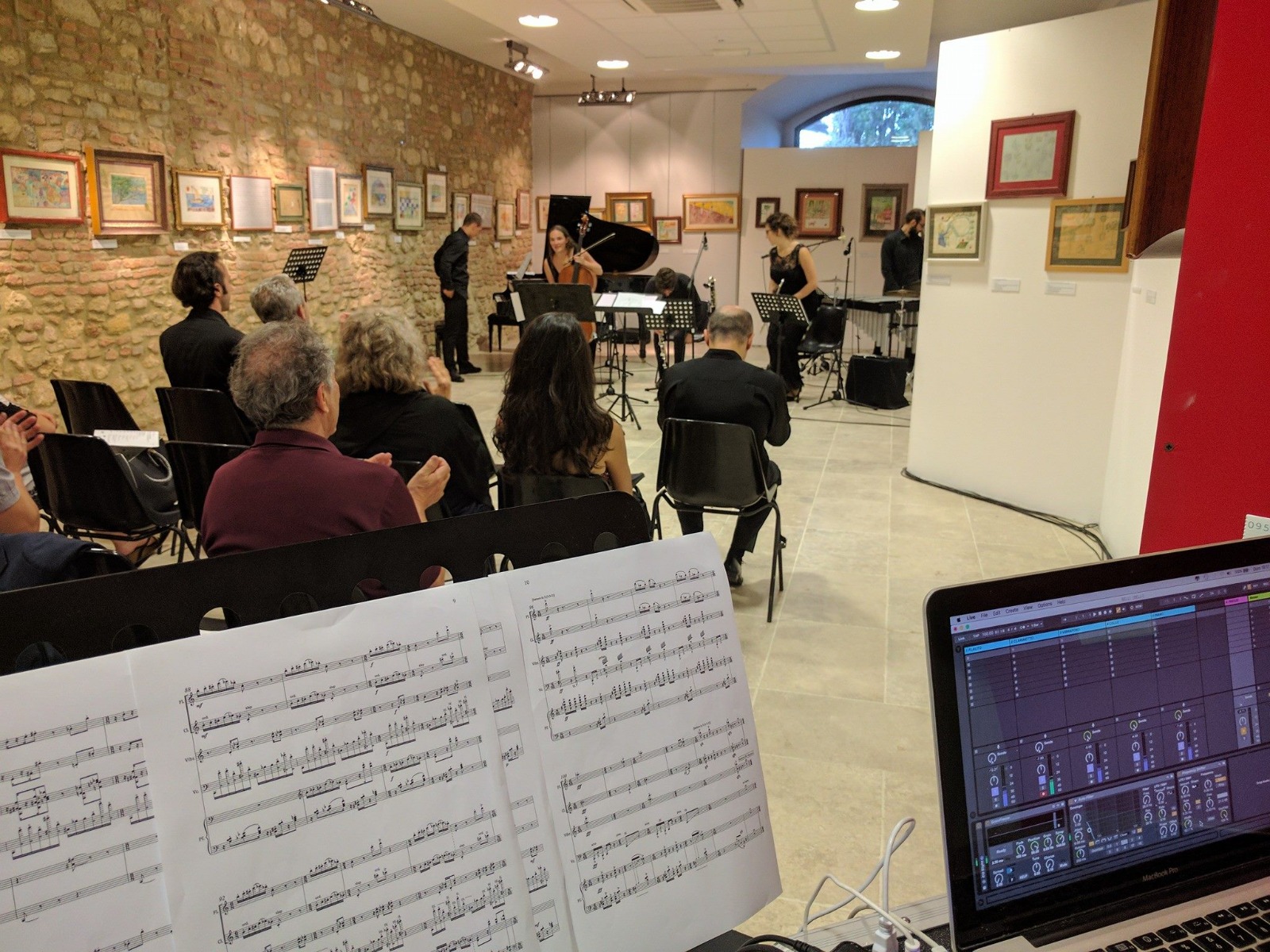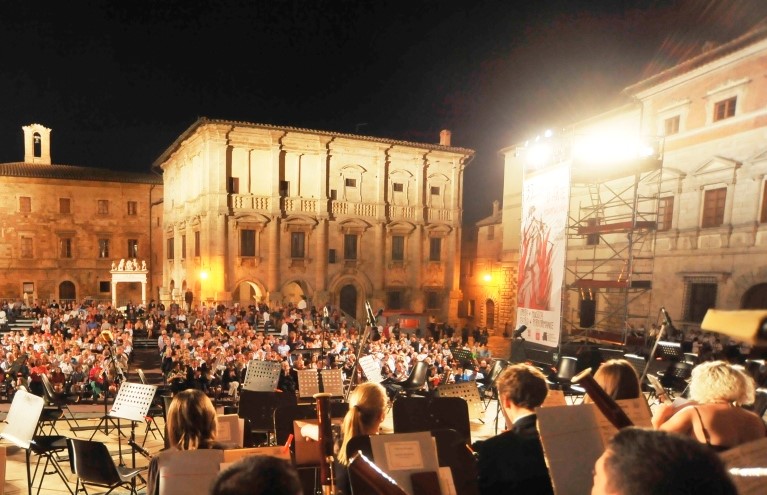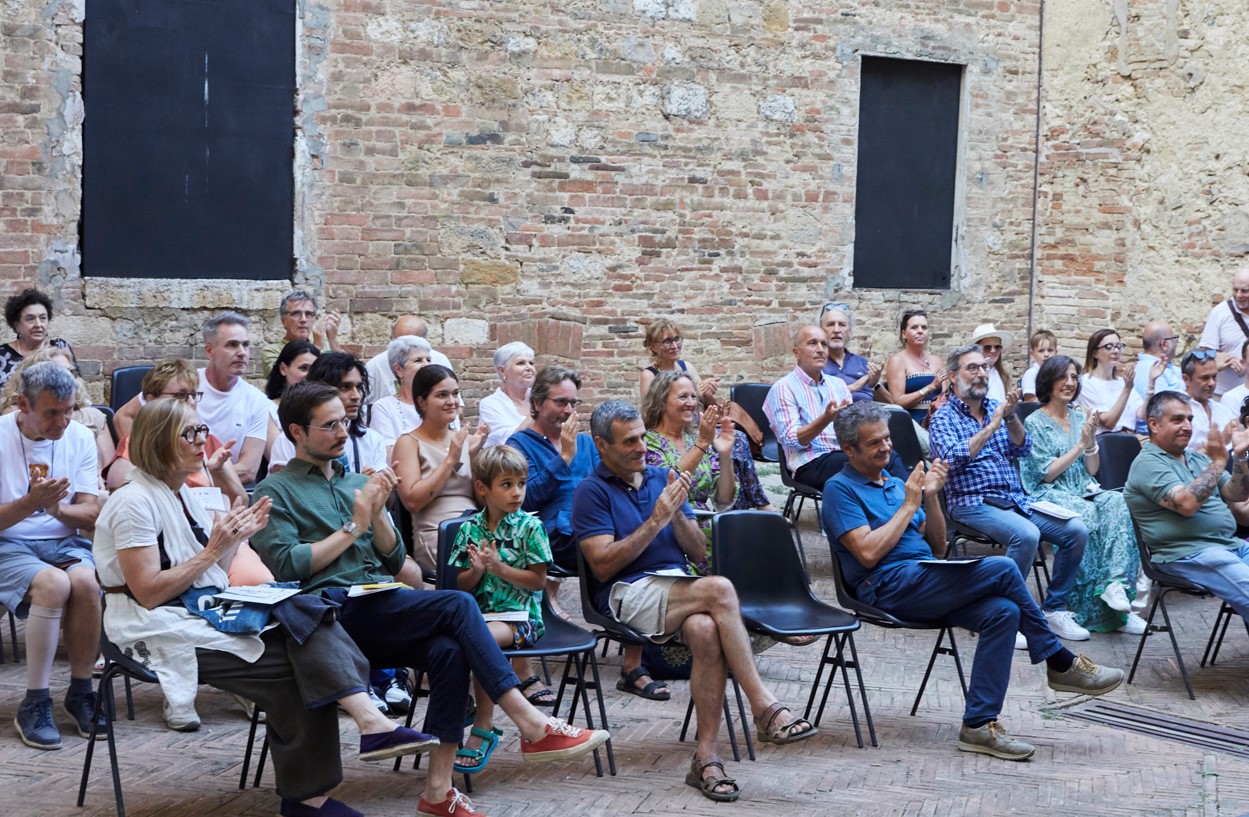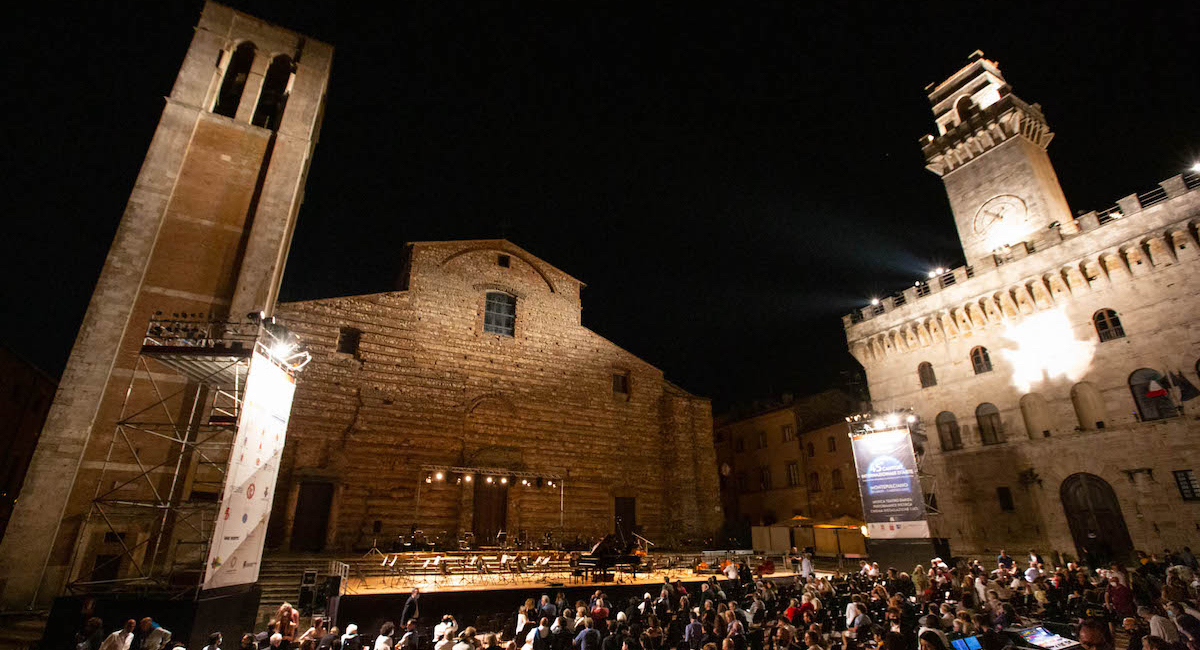CONCERTO DI MUSICA DA CAMERA
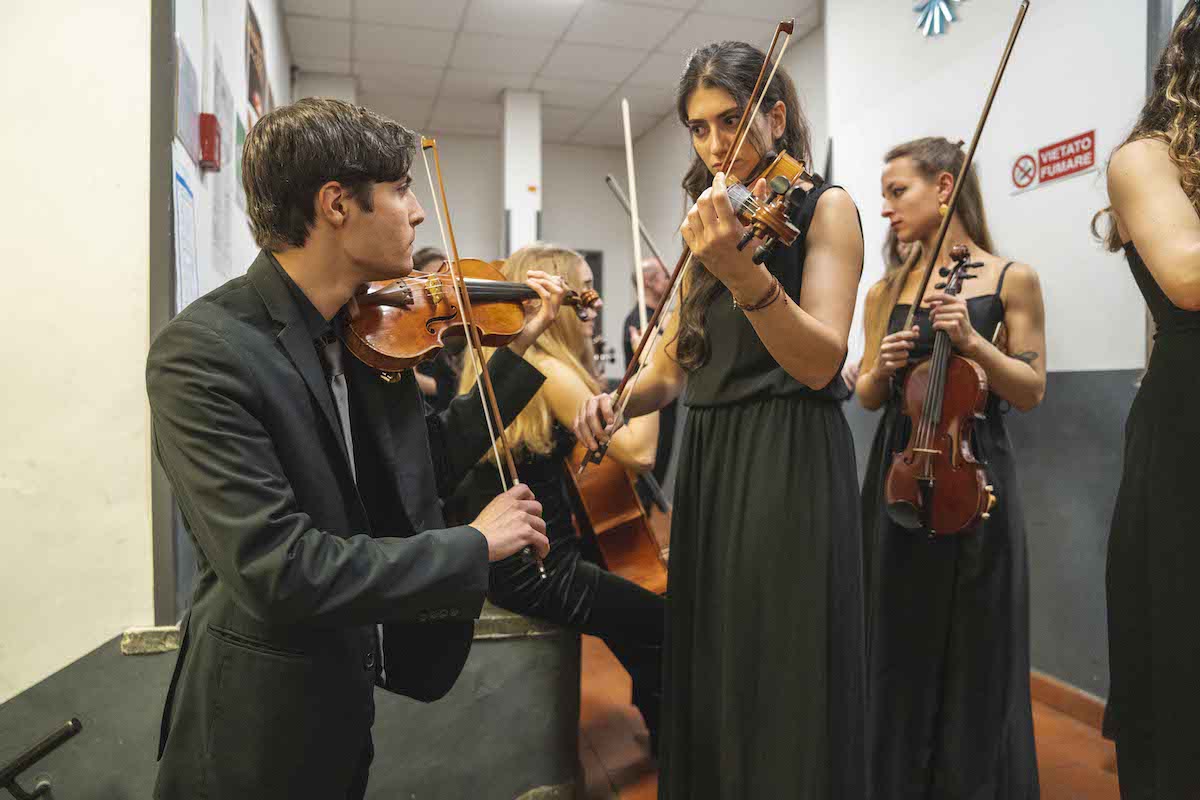
SOLISTI E QUINTETTI
DELL'ORCHESTRA
GIOVANILE
ITALIANA
Cetona - Sala Santissima Annunziata
MARTEDÌ 16 LUGLIO
Ore 21:30
INGRESSO €1
ACQUISTA IL BIGLIETTO
Per tutti i biglietti acquistati in prevendita, la maggiorazione prevista è di 1,50 euro.
Benjamin Britten
(1913 - 1976)
da Six Metamorphoses after Ovid op. 49
Pan
Phaeton
Arethusa
Niccolò Rossi oboe
Maurice Ravel
(1875-1937)
Tombeau de Couperin
(arrangiamento di Mason Jones)
Prelude
Fugue
Menuet
Rigaudon
Arianna Zappa flauto
Gabriele Polcaro oboe
Rocco Barenghi clarinetto
Giulia Boda fagotto
Fabiana Sini corno
Johann Sebastian Bach
(1685 - 1750)
dalla Partita in la minore per flauto solo BWV1013
Allemande
Courante
Arianna Zappa flauto
Sergei Prokofiev
(1891 - 1953)
Quintetto op. 39 in sol minore
Tema con variazioni
Andante energico
Allegro sostenuto, ma con brio
Adagio pesante
Allegro precipitato, ma non troppo presto
Andantino
Gabriele Polcaro oboe
Rocco Barenghi clarinetto
Federico di Bari violino
Giorgia Bartoccini viola
Vittorio Cirasaro contrabbasso
In collaborazione con
Scuola di Musica di Fiesole

Six Metamorphoses after Ovid op. 49 è una suite di sei pezzi per oboe solo ispirata a sei episodi tratti dalle Metamorfosi di Ovidio. Benjamin Britten la compose nel 1951 dedicandola all’oboista Joy Boughton e venne eseguita per la prima volta al Festival di Aldeburgh il 14 giugno dello stesso anno. Unica composizione del compositore inglese per oboe solo, la suite mette in risalto e esplora nel corso dei sei pezzi capacità espressive e coloristiche dello strumento. Niccolò Rossi eseguirà tre dei sei episodi della suite: Pan “Senza misura” - I movimento, Phaeton “Vivace ritmico” - II movimento e Arethusa "Largamente” - VI movimento
Le Tombeau de Couperin è uno dei brani più famosi di Maurice Ravel. Nasce come brano per pianoforte. La sua composizione inizia nel 1914, ma viene interrotta nel 1915 quando Ravel si arruola come volontario nell’esercito e riprende solo nel 1917, momento in cui viene riformato per gravi motivi di salute. La versione per pianoforte segue la forma della “Suite francese”: sei pezzi, ognuno dei quali dedicati ad un amico morto in guerra. Tuttavia il termine Tombeau non va tradotto come tomba in un’allusione funebre, bensì come omaggio. É lo stesso Ravel a parlarne in una sua lettera dicendo “A dire il vero l'omaggio è rivolto non tanto al solo (François) Couperin quanto all'intera musica francese del XVIII secolo”. L’opera si fonda sulla riscoperta delle forme del Barocco visto come un’epoca felice in cui rifugiarsi per fuggire all’orrore e al dolore causato dalla guerra e dalle brutture cui il mondo andava lentamente scivolando. Due anni più tardi Ravel cominciò ad occuparsi della versione orchestrale, eseguita per la prima volta il 20 febbraio 1920. La versione per orchestra presenta quattro brani invece dei sei dell’originale versione per pianoforte, dalla quale sono stati espunti il secondo e il sesto brano. Nel concerto di oggi verrà eseguito secondo l’arrangiamento per quintetto di fiati realizzato da Mason Jones nel 1970.
La partita in la minore per flauto solo BWV1013 di Johann Sebastian Bach è una composizione che risale agli anni venti del XVIII secolo. È infatti in questi anni che si va diffondendo in tutta Europa un nuovo strumento a fiato, il flauto traversiere, o semplicemente «traversiere», antenato del moderno flauto traverso. Non c’è da stupirsi che anche Bach rimase colpito da questo nuovo strumento e dalle sue potenzialità, tanto da decidere di volerlo impiegare in alcune composizioni da camera. Sul frontespizio del manoscritto della partita, datato 1722, troviamo infatti scritto «Solo pour la Flute traversiere». Arianna Zappa al flauto eseguirà i primi due movimenti della Suite, Allemande e Courante.
Il Quintetto op. 39 in sol minore di Sergei Prokofiev è un’opera da camera appartenente al cosiddetto periodo parigino del compositore russo. La composizione inizia nel 1924, quando la compagnia di balletti Boris Romanov commissiona a Prokofiev la musica per il balletto Le Trepèze, ispirato alla vita del circo. Potendo contare su un’orchestra di pochi elementi, Prokofiev decide di comporre l’opera per un quintetto in cui far convergere e convivere diverse combinazioni timbriche. Nasce così il quintetto in sol minore op. 39, composto da sei movimenti dove i cinque strumenti sono in equilibrio tra loro e ognuno ha la stessa importanza degli altri scambiandosi vicendevolmente gli elementi tematici. (Myriam Bizzarri)
Six Metamorphoses after Ovid op. 49 is a suite of six pieces for solo oboe inspired by six episodes from Ovid's Metamorphoses. Benjamin Britten composed it in 1951, dedicating it to oboist Joy Boughton and it was performed for the first time at the Aldeburgh Festival on 14 June of the same year. The only composition by the English composer for solo oboe, the suite highlights and explores the expressive and colourful capabilities of the instrument over the course of the six pieces. Niccolò Rossi will perform three of the six episodes of the suite: Pan “Senza Misura” - 1st movement, Phaeton “Vivace rhythmico” - 2nd movement and Arethusa "Largamente” - 4th movement
Le Tombeau de Couperin is one of Maurice Ravel's most famous pieces. It was born as a piece for piano. Its composition began in 1914, but was interrupted in 1915 when Ravel enlisted as a volunteer in the army and resumed only in 1917, at which time he was invalided out for serious health reasons. The piano version follows the form of the “French Suite”: six pieces, each dedicated to a friend who died in the war. However, the term Tombeau should not be translated as tomb in a funereal allusion, but rather as homage. Ravel himself spoke about it in one of his letters, saying "To tell the truth, the homage is aimed not so much at (François) Couperin alone as at the entire French music of the 18th century". The work is based on the rediscovery of the Baroque forms seen as a happy era in which to take refuge to escape the horror and pain caused by the war and the ugliness into which the world was slowly slipping. Two years later Ravel began to work on the orchestral version, performed for the first time on 20 February 1920. The orchestral version features four pieces instead of the six of the original piano version, from which the second and sixth pieces were removed. In today's concert it will be performed following the arrangement for wind quintet created by Mason Jones in 1970.
Johann Sebastian Bach's Partita in A minor for solo flute BWV1013 is a composition that dates back to the 1820s. In fact, it is in recent years that a new wind instrument, the traversiere flute, or simply «traversiere», ancestor of the modern transverse flute, is spreading throughout Europe. It is not surprising that Bach was also impressed by this new instrument and its potential, so much so that he decided to use it in some chamber compositions. On the title page of the manuscript of the piece, dated 1722, we find written «Solo pour la Flute traversiere». Arianna Zappa on flute will perform the first two movements of the Suite, Allemande and Courante.
The Quintet op. 39 in G minor by Sergei Prokofiev is a chamber work belonging to the so-called Parisian period of the Russian composer. The composition began in 1924, when the Boris Romanov ballet company commissioned Prokofiev to write music for the ballet Le Trepèze, inspired by circus life. Being able to count on an orchestra of few elements, Prokofiev decided to compose the work for a quintet in which different timbral combinations could converge and coexist. Thus was born the quintet in G minor op. 39, consisting of six movements where the five instruments are in balance with each other and each has the same importance as the others, mutually exchanging thematic elements. (Myriam Bizzarri)
 Sostieni i progetti
Sostieni i progetti Amministrazione Trasparente
Amministrazione Trasparente Contatti
Contatti
